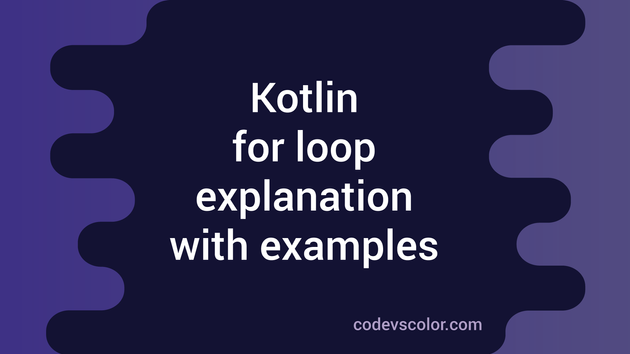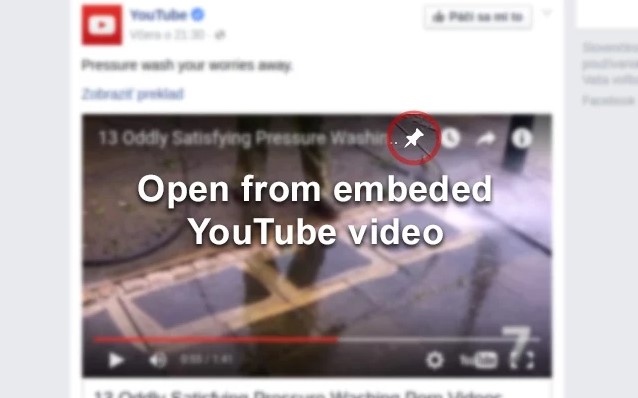Sometimes the static type helps to detect errors at the compile-time it does not support the feature for implicit conversion between the datatypes. Most often we do not use the explicit datatype for the variables that can be interfered with the kotlin type inference for determining the datatype. We can also possibly for converting the other types like String to Boolean which will as some constants and built-in methods for using to validate the boolean statements. The boolean object allocated the default value argument as passing to the method whenever we call it in other areas. This class implements the Serializable interface, but does not define a serialVersionUID field.
Also, different source code to bytecode compilers may use different naming conventions for synthetic variables generated for references to class objects or inner classes. To ensure interoperability of Serializable across versions, consider adding an explicit serialVersionUID. SEI CERT SEC05-J rule forbids the use of reflection to increase accessibility of classes, methods or fields. An attacker code may call this method and pass such class to create an instance of it. This should be avoided by either making the method non-public or by checking for package access permission on the package.
Type variables (§4.4) and type arguments (§4.5.1) are not reified at run time. As a result, the same class or interface at run time represents multiple parameterized types (§4.5) from compile-time. Specifically, all compile-time invocations of a given generic type declaration (§8.1.2, §9.1.2) share a single run-time representation. Note that this does not imply that heap pollution only occurs if a compile-time unchecked warning actually occurred.
This method calls equals on two references of unrelated interface types, where neither is a subtype of the other, and there are no known non-abstract classes which implement both interfaces. Therefore, the objects being compared are unlikely to be members of the same class at runtime . An attacker code may call this method and pass such field to change it.
SpotBugs tracks type information from instanceof checks, and also uses more precise information about the types of values returned from methods and loaded from fields. Thus, it may have more precise information that just the declared type of a variable, and can use this to determine that a cast will always throw an exception at runtime. This method calls equals on two references of different class types and analysis suggests they will be to objects of different classes at runtime. Further, examination of the equals methods that would be invoked suggest that either this call will always return false, or else the equals method is not be symmetric . There are limits on the storage type qualifiers that variables of struct types can be defined with. Specifically, structs cannot be used as input/output variables.
A final static field that is defined in an interface references a mutable object such as an array or hashtable. This mutable object could be changed by malicious code or by accident from another package. To solve this, the field needs to be moved to a class and made package protected to avoid this vulnerability. This method calls equals on two references, one of which is a class and the other an interface, where neither the class nor any of its non-abstract subclasses implement the interface. When an array indexing expression, including struct field member accesses, results in an opaque types, the standard has special requirements on those array indices.
Under GLSL version 3.30, Sampler arrays (the only opaque type 3.30 provides) can be declared, but they can only be accessed by compile-time integral Constant Expressions. So you cannot loop over an array of samplers, no matter what the array initializer, offset and comparison expressions are. There are contexts in the Java programming language where a generic class or interface name is used without providing type arguments. Rather, they are contexts where type arguments are unnecessary for, or irrelevant to, the meaning of the generic class or interface. This class extends from a Struts Action class, and uses an instance member variable.
Since only one instance of a struts Action class is created by the Struts framework, and used in a multithreaded way, this paradigm is highly discouraged and most likely problematic. Only instance fields that are written outside of a monitor are reported. Array objects grow and shrink dynamically and can have any JavaScript value. JavaScript engines perform optimizations so that these arrays are fast. Each entry in a JavaScript typed array is a raw binary value in one of a number of supported formats, from 8-bit integers to 64-bit floating-point numbers. I test for double rounding errors by doing the decimal to float and decimal to double to float conversions.
In an alternative version of the code I just checked the bit patterns of each rounded number to see if it matched an error pattern. That is more code, but it is independent of any particular language's decimal to floating-point conversion routine . The new variable is initialized with the corresponding argument value from the creation expression or constructor invocation. The constructor parameter effectively ceases to exist when the execution of the body of the constructor is complete.
Because of the occasional need to use a generic class or interface name without type arguments, type names are distinct from type declaration specifiers. A type name is always qualified by means of another type name. In some cases, this is necessary to access an inner class that is a member of a parameterized type. This class uses synchronization along with wait(), notify() or notifyAll() on itself . Client classes that use this class, may, in addition, use an instance of this class as a synchronizing object. Because two classes are using the same object for synchronization, Multithread correctness is suspect.
You should not synchronize nor call semaphore methods on a public reference. Consider using a internal private member variable to control synchronization. The method calls Pattern.compile inside the loop passing the constant arguments. If the Pattern should be used several times there's no reason to compile it for each loop iteration. Move this call outside of the loop or even into static final field.
This method contains an unsynchronized lazy initialization of a static field. After the field is set, the object stored into that location is further updated or accessed. The setting of the field is visible to other threads as soon as it is set. This method contains an unsynchronized lazy initialization of a non-volatile static field.
Because the compiler or processor may reorder instructions, threads are not guaranteed to see a completely initialized object,if the method can be called by multiple threads. This method invokes the .equals to compare an array and a reference that doesn't seem to be an array. If things being compared are of different types, they are guaranteed to be unequal and the comparison is almost certainly an error.
Even if they are both arrays, the equals method on arrays only determines of the two arrays are the same object. To compare the contents of the arrays, use java.util.Arrays.equals(Object[], Object[]). Repeated message fields work similar to repeated scalar fields. However, the corresponding Python object also has an add() method that creates a new message object, appends it to the list, and returns it for the caller to fill in.
Also, the object's append() method makes a copy of the given message and appends that copy to the list. This is done so that messages are always owned by the parent message to avoid circular references and other confusion that can happen when a mutable data structure has multiple owners. Similarly, the object's extend() method appends an entire list of messages, but makes a copy of every message in the list. In the kotlin language, the boolean data type is the most predominant and it can be validated along with the other operands with different data types like integer, string, etc.
It supports only true and false statements if the input condition is satisfied it will execute the loop conditions else it will exit the loop. In kotlin programming, language datatype is the most important one for declaring and utilizing the values. Like that boolean is one of the data type and it also considers as the primitive datatype it satisfies only true or false statement. Opaque types represent some external object which the shader references in some fashion.
Opaque variables do not have "values" in the same way as regular types; they are markers that reference the real data. As such, they can only be used as parameters to functions. The DataView is a low-level interface that provides a getter/setter API to read and write arbitrary data to the buffer. This is useful when dealing with different types of data, for example.
Typed array views are in the native byte-order of your platform. It is big-endian by default and can be set to little-endian in the getter/setter methods. In statically typed languages, a type is mainly a compile timeconstruct.
It is a construct to enforce invariants about the behavior of a program. Invariants are unchangeable properties that hold for all variables of a given type. Enforcing them ensures, for example, that variables of a data type never have invalid values. The compile-time type of a variable is always declared, and the compile-time type of an expression can be deduced at compile time. The compile-time type limits the possible values that the variable can hold at run time or the expression can produce at run time.
If a run-time value is a reference that is not null, it refers to an object or array that has a class, and that class will necessarily be compatible with the compile-time type. The float, float-extended-exponent, double, and double-extended-exponent value sets are not types. This class extends from a Servlet class, and uses an instance member variable.
Since only one instance of a Servlet class is created by the J2EE framework, and used in a multithreaded way, this paradigm is highly discouraged and most likely problematic. A public static method returns a reference to an array that is part of the static state of the class. Any code that calls this method can freely modify the underlying array.
It is generally a good idea to use a finally block to ensure that streams are closed. Objects of this class will not be deserialized correctly if a non-Serializable object is stored in this field. This page describes exactly what Python definitions the protocol buffer compiler generates for any given protocol definition. You should read the proto2 language guide and/or proto3 language guide before reading this document.
As in most modern programming languages, Kotlin supports generic classes. Generic classes contain operations that aren't specific to a particular data type. They contain a placeholder type that must be filled in whenever the class or function is used. Then we did the benchmarks, rejoiced at the result, and released the library.
However, in our pride, we didn't think to benchmark the arithmetic operations; we only did mathematics (exponent etc.) and reduction (sum etc.). When we later added the arithmetic benchmarks, we were surprised to see that viktor performed poorly compared to a naïve loop. A couple of JITWatch sessions later, we learned that even the ancient JDK 1.8 is capable of SIMDizing the most primitive patterns. Only the JDK calls its native code with much less overhead. Therefore, we dropped the SIMD arithmetic and replaced it with naïve loop arithmetic, and suddenly, performance increased.
In this program, the class Pointdeclares a final class variable origin. The origin variable holds a reference to an object that is an instance of class Point whose coordinates are . The value of the variable Point.origin can never change, so it always refers to the same Pointobject, the one created by its initializer.
However, an operation on this Point object might change its state - for example, modifying its useCount or even, misleadingly, its x or ycoordinate. Were it not for one exceptional situation, a local variable could always be regarded as being created when its local variable declaration statement is executed. The exceptional situation involves the switch statement (§14.11), where it is possible for control to enter a block but bypass execution of a local variable declaration statement. Most objects have state, stored in the fields of objects that are instances of classes or in the variables that are the components of an array object. A new class instance is implicitly created when the string concatenation operator + (§15.18.1) is used in a non-constant (§15.28) expression, resulting in a new object of type String (§4.3.3). Note that Sun's javac compiler often generates dead stores for final local variables.
Because SpotBugs is a bytecode-based tool, there is no easy way to eliminate these false positives. This class extends a class that defines an equals method and adds fields, but doesn't define an equals method itself. Thus, equality on instances of this class will ignore the identity of the subclass and the added fields. Be sure this is what is intended, and that you don't need to override the equals method. This method uses the toArray() method of a collection derived class, and passes in a zero-length prototype array argument.
This avoids the need to create a second array to return as the result. A boxed primitive is created just to call compareTo method. It's more efficient to use static compare method (for double and float since Java 1.4, for other primitive types since Java 1.7) which works on primitives directly.
Calling an overridable method during in a constructor may result in the use of uninitialized data. It may also leak the this reference of the partially constructed object. Only static, final or private methods should be invoked from a constructor. Returning a reference to a mutable object value stored in one of the object's fields exposes the internal representation of the object. If instances are accessed by untrusted code, and unchecked changes to the mutable object would compromise security or other important properties, you will need to do something different.
Returning a new copy of the object is better approach in many situations. If this int is converted to a byte then -1 and the byte 0xFF become indistinguishable, this comparing the result to -1 causes the read to end prematurely if the character 0xFF is met. Similarly, the method java.io.FileReader.read() also returns an int. If it is converted to a char then -1 becomes 0xFFFF which is Character.MAX_VALUE. Comparing the result to -1 is pointless, since characters are unsigned in Java.




























